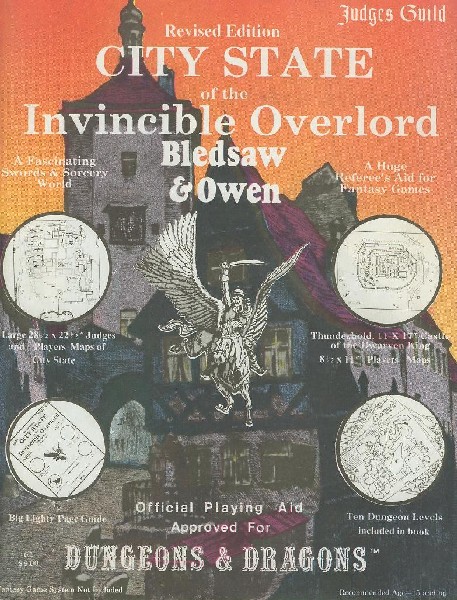
S2 White Plume Mountain
Experiences and Reminisces: This is one I never owned until my adult years. I remember playing it in Paul Fey’s backyard, where his mom set up a picnic table for gaming al fresco. Playing in this module was like visiting a funhouse. Each room represented a wildly different encounter, which was more or less by design, as this was originally a tournament module. There was a sphinx asking riddles in the first room, a hallway that functioned like a microwave over, swinging chains over lava pits, hallways that turned into rotating cylinders. Damn, this place was wild. But the room that captured my imagination was the “inverted ziggurat,” a stepped arena where each level had a different environment for the monsters that lived there—giant scorpions, sea monsters, and manticores. I don’t remember if we ever recovered even one of the three magic weapons we were looking for, but all of us in the game has a blast.
What Made it Popular? Well, White Plume Mountain did not win praise because of its well-thought out ecology or logical arrangement of rooms. Lawrence Schick, the author, went to great lengths to make each single encounter unusual and memorable. At a time when most TSR produces would describe a room as “Four goblins guarding a chest with 236 sp,” S2 makes sure that players are constantly on their guard, challenging their own first impressions of the situation. Most of the traps had several possible solutions, encouraging creative solutions to problems (judicious use of flight helped us with the inverted ziggurat, if I recall correctly. So, yeah, this is a funhouse. There must be better ways to guard important magical artifacts. But if you can get past the sheer irrationality of the setup, there are far worse ways to spend time in the hobby. 
Test of Time. Two subsequent editions were published. The 2E “Return to White Plume Mountain” greatly expanded the dungeon and the history behind it. The dungeons were stocked with copies of the mad mage, who replicated his personality in a host of unpleasant beasties. This creates a political dimension to the dungeon. I admire the sophistication of this adaptation, but I think it loses a lot of the sheer lunatic fun of the tournament challenge that S2 presented. Wizards released an online update for 3.5E that is fairly faithful to the original, with a few updates to promote new rules supplements (such as the “weapons of legacy” and the recently published Fiend Folio.
Given how short the original is (along with the 3.5 update), an experienced party could complete the dungeon in a single long session or perhaps two. White Plume Mountain is an ideal diversion, with unique challenges and rewards. It is well worth looking up and adapting to your game, if only to keep in reserve for that night when everyone is feeling a little silly.






